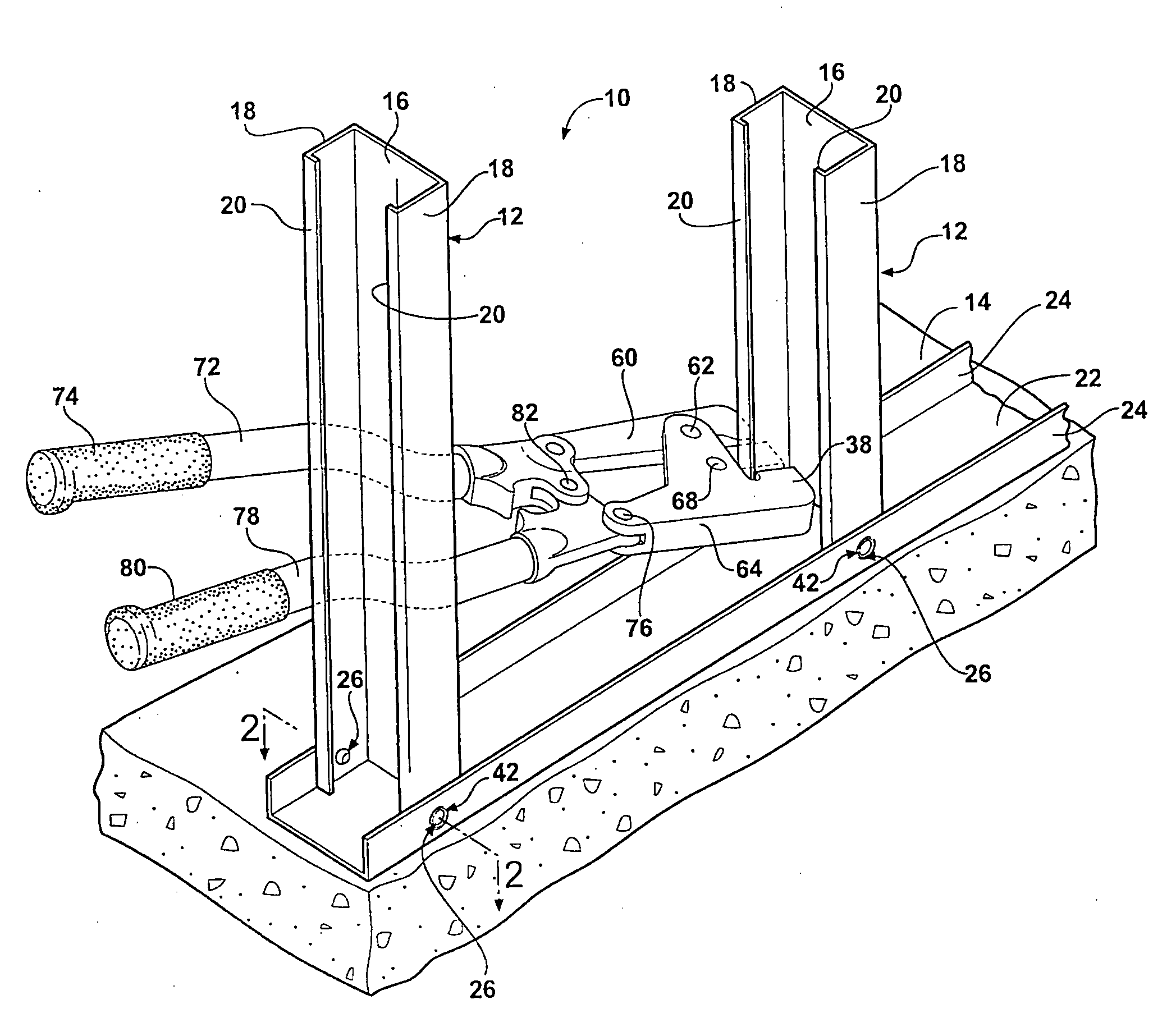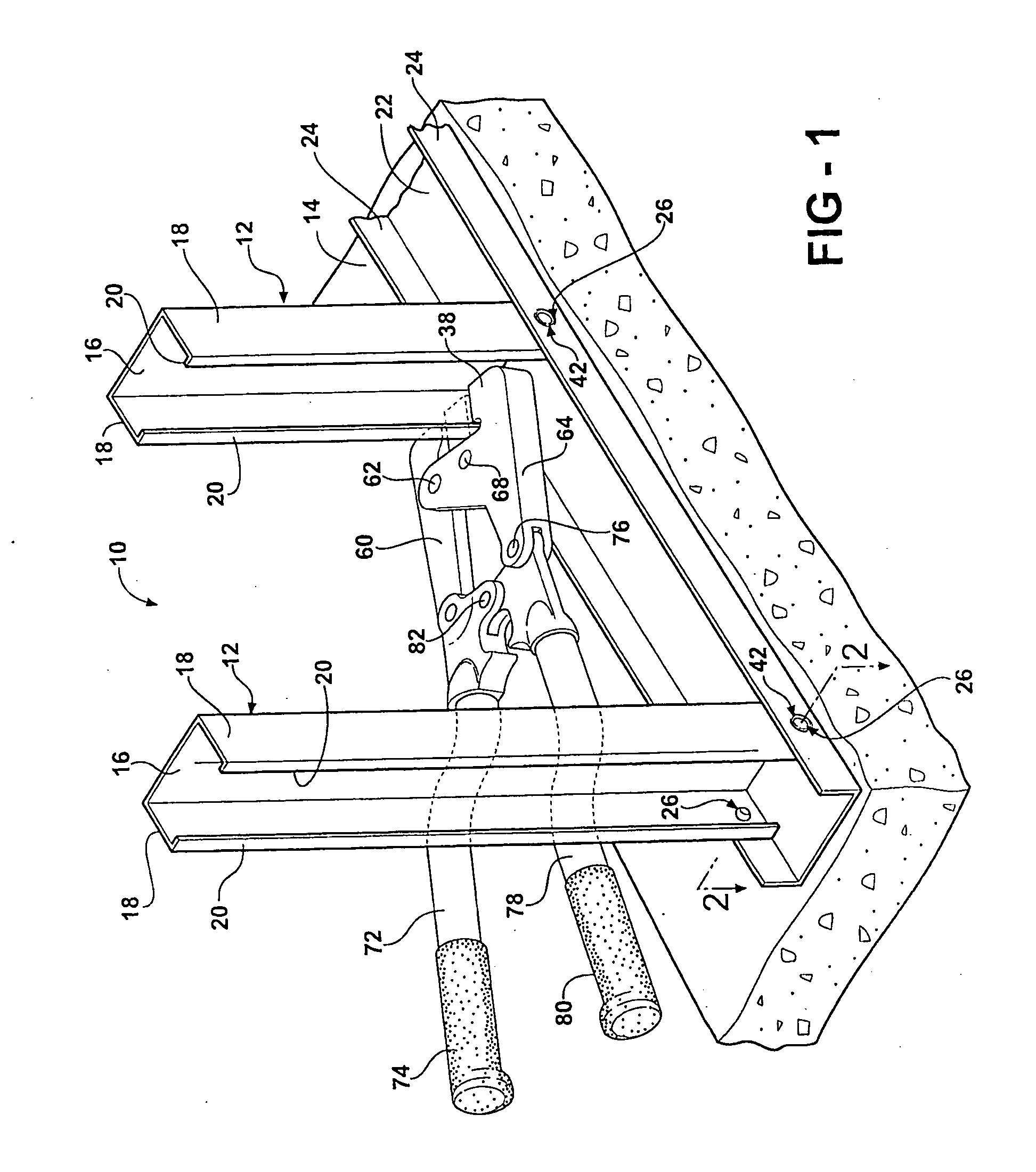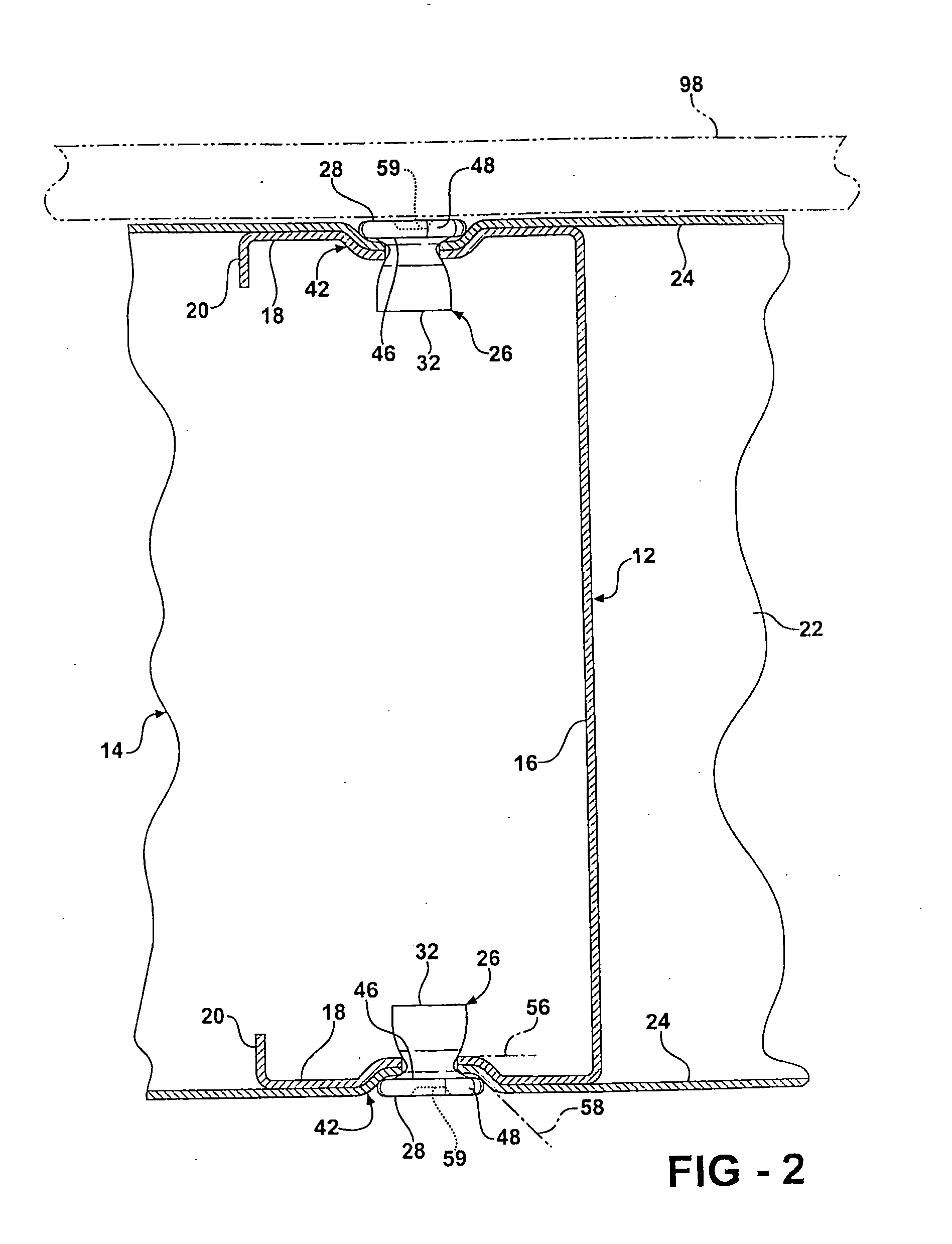Rivet tool for steel studs
- Summary
- Abstract
- Description
- Claims
- Application Information
AI Technical Summary
Benefits of technology
Problems solved by technology
Method used
Image
Examples
Embodiment Construction
[0021]Referring to the Figures, wherein like numerals indicate like or corresponding parts throughout several views, a typical steel frame wall 10 under construction is generally shown in FIG. 1 including vertical studs 12 fastened to a bottom track 14. The studs 12 and bottom track 14 are here used only for illustrative purposes as those skilled in the art will understand that other structural components, such as a top track, cross members, trusses, beams, brackets and the like also made from formed sheet metal can be joined in the same fashion as those components illustrated in FIG. 1. Therefore, while the following description will reference the joining of a stud 12 to a bottom track 14, it must be understood that any other sheet metal joining requirements can be addressed using the method and apparatus of the subject invention.
[0022]As is well-known in the art, the studs 12 of a steel frame wall 10 extend between opposite ends thereof and have a generally C-shaped cross-section....
PUM
| Property | Measurement | Unit |
|---|---|---|
| Yield point | aaaaa | aaaaa |
Abstract
Description
Claims
Application Information
 Login to View More
Login to View More - R&D
- Intellectual Property
- Life Sciences
- Materials
- Tech Scout
- Unparalleled Data Quality
- Higher Quality Content
- 60% Fewer Hallucinations
Browse by: Latest US Patents, China's latest patents, Technical Efficacy Thesaurus, Application Domain, Technology Topic, Popular Technical Reports.
© 2025 PatSnap. All rights reserved.Legal|Privacy policy|Modern Slavery Act Transparency Statement|Sitemap|About US| Contact US: help@patsnap.com



